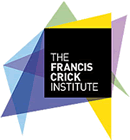About the Project
This 4-year PhD studentship is offered in Dr Folkert van Werven’s Group based at the Francis Crick Institute (the Crick) and Dr Vahid Shahrezaei’s Group based at Imperial College London.
Cell fate decisions are triggered by environmental queues and intrinsic cellular properties. The work from the laboratory of Folkert van Werven is aimed at elucidating the mechanisms by which the cell integrates multiple signals to achieve a binary decision – whether or not to differentiate. This understanding is critical to understand cell specialization and development of multicellularity. The budding yeast S. cerevisiae is an ideal model system to study this problem.
In response to a combination of extracellular and intracellular cues budding yeast undergoes a highly conserved cell differentiation program called gametogenesis. The decision to enter a differentiation program is controlled by multiple external and internal signal cues, which integrate at the promoter of master regulator of entry in meiosis called IME1 [1-3]. Understanding how the IME1 promoter is regulated is key to understanding how entry into gametogenesis is controlled. Much efforts have been taken to identify key signaling pathways, transcriptional regulators, and long noncoding RNAs that each contribute to the expression of the IME1, and henceforth the decision to enter gametogenesis [1-3].
Although, we have good understanding on how each of the players separately is important, there is still a lack of understanding how the decision to enter meiosis is made. In particular we would like to obtain insight into the question why certain cells do enter meiosis and others do not? The long term goal is to have an accurate predictive model on when and how cells make the decision to enter gametogenesis. In this context, mathematical modeling can help to build a systems level understanding of how entry into gametogenesis is controlled.
The PhD candidate will be supervised by Folkert van Werven (Crick) and Vahid Shahrezaei (Imperial College). The Shahrezaei research group uses tools from applied mathematics and statistics to study temporal, spatial and stochastic dynamics of biochemical networks and constrain them to biological data [4]. Previously the Shahrezaei group have studied decision making in yeast mating elucidating mechanisms behind sharp switch like response to pheromone [5]. Also, stochastic models of gene regulatory network of the Lambda phage cell fate determination system is used to explain recent puzzling single cell data on the role of multiplicity of infection in the rate of lysogeny.
The ideal candidate has a strong background in math, physics or a related subject, a strong interest in biological systems, and preferably “wet lab” experience. Taken together, the PhD candidate will use a combination of “wet lab” (Folkert van Werven) and “in silico” (Vahid Shahrezaei) approaches to study how cells control a critical cell fate decision
Talented and motivated students passionate about doing research are invited to apply for this PhD position. The successful applicant will join the Crick PhD Programme in September 2019 and will register for their PhD at Imperial College London.
Applicants should hold or expect to gain a first/upper second-class honours degree or equivalent in a relevant subject and have appropriate research experience as part of, or outside of, a university degree course and/or a Masters degree in a relevant subject.
APPLICATIONS MUST BE MADE ONLINE VIA OUR WEBSITE (ACCESSIBLE VIA THE ‘APPLY NOW’ LINK ABOVE) BY 12:00 (NOON) MARCH 19 2019. APPLICATIONS WILL NOT BE ACCEPTED IN ANY OTHER FORMAT.
Funding Notes
In addition to meeting the standard Crick academic eligibility criteria applicants to this position will be expected to hold either a 4-year integrated MSci degree with 1st class honours, or a Bachelor degree (in Maths, Physics or other related subject) at 2:1 or better plus a Masters with Distinction.
Non-EU candidates are not eligible for the funding for this project.
Successful applicants will be awarded a non-taxable annual stipend of £22,000 plus payment of university tuition fees.
References
1. Moretto, F., Wood, N. E., Kelly, G., Doncic, A. and van Werven, F. J. (2018)
A regulatory circuit of two lncRNAs and a master regulator directs cell fate in yeast.
Nature Communications 9: 780. PubMed abstract
2. Weidberg, H., Moretto, F., Spedale, G., Amon, A. and van Werven, F. J. (2016)
Nutrient control of yeast gametogenesis is mediated by TORC1, PKA and energy availability.
PLOS Genetics 12: e1006075. PubMed abstract
3. van Werven, F. J., Neuert, G., Hendrick, N., Lardenois, A., Buratowski, S., van Oudenaarden, A., . . . Amon, A. (2012)
Transcription of two long noncoding RNAs mediates mating-type control of gametogenesis in budding yeast.
Cell 150: 1170-1181. PubMed abstract
4. Shahrezaei, V. and Swain, P. S. (2008)
The stochastic nature of biochemical networks.
Current Opinion in Biotechnology 19: 369-374. PubMed abstract
5. Malleshaiah, M. K., Shahrezaei, V., Swain, P. S. and Michnick, S. W. (2010)
The scaffold protein Ste5 directly controls a switch-like mating decision in yeast.
Nature 465: 101-105. PubMed abstract

 Continue with Facebook
Continue with Facebook

